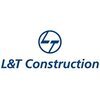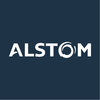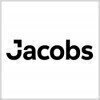Filter interviews by
Leighton Contractors Safety Officer Interview Questions, Process, and Tips
Leighton Contractors Safety Officer Interview Experiences
2 interviews found
I applied via Referral and was interviewed in Mar 2021. There was 1 interview round.
Interview Questionnaire
3 Questions
- Q1. What is JHA?
- Ans.
JHA stands for Job Hazard Analysis. It is a process of identifying potential hazards in a job or task and implementing measures to control or eliminate them.
JHA is a systematic approach to identify and evaluate potential hazards in a job or task.
It involves breaking down a job into steps and analyzing each step for potential hazards.
The goal of JHA is to identify hazards and implement measures to control or eliminate t...
- Q2. What is WMS?
- Ans.
WMS stands for Warehouse Management System.
WMS is a software application that helps manage warehouse operations.
It includes inventory management, order fulfillment, and shipping.
WMS can improve efficiency, accuracy, and productivity in a warehouse.
Examples of WMS include SAP EWM, Oracle WMS, and Manhattan Associates WMoS.
- Q3. What is PTW?
- Ans.
PTW stands for Permit to Work. It is a formal written system used to control high-risk activities.
PTW is a safety management system used to ensure that high-risk activities are carried out safely.
It involves obtaining a written permit before starting any high-risk activity.
The permit outlines the hazards associated with the activity and the precautions that need to be taken.
PTW is commonly used in industries such as co...
Interview Preparation Tips
Skills evaluated in this interview
I applied via Company Website and was interviewed before Sep 2020. There was 1 interview round.
Interview Questionnaire
2 Questions
- Q1. What is safety?.
- Ans.
Safety is the state of being protected from harm, danger, or injury.
Safety involves identifying and assessing potential hazards
Implementing measures to control or eliminate those hazards
Providing training and education to prevent accidents
Maintaining equipment and facilities to ensure they are safe to use
Encouraging a culture of safety in the workplace
Examples include wearing personal protective equipment, following sa...
- Q2. What's safety officer duties?.
- Ans.
Safety officer duties include ensuring compliance with safety regulations, identifying and mitigating hazards, and promoting a culture of safety.
Develop and implement safety policies and procedures
Conduct safety inspections and audits
Investigate accidents and incidents
Provide safety training to employees
Maintain safety records and reports
Collaborate with management and employees to promote safety culture
Interview Preparation Tips
Top trending discussions






Interview questions from similar companies

I applied via Company Website and was interviewed before Apr 2021. There were 7 interview rounds.
Accident, incident
Any hazardous
Any near miss
HIRA
Interview Preparation Tips
- Diploma Fire and Safety

I appeared for an interview in Jan 2025.
I am a safety officer, I have 2 years of experience, currently I am working in Hyundai construction equipment Pune.
I have done fire industrial safety management course from National Technical Institute in Jamshedpur and have completed my 12th, basic courses ADCA Excel MS office MS PowerPoint etc.
(2 Questions)
- Q1. How many hours of duty do I have to do?
- Q2. Is it a construction line or an industrial line?
- Ans.
It is a construction line.
Construction line involves building structures like houses, roads, bridges, etc.
Industrial line typically refers to manufacturing processes in factories.
Examples of construction line companies: Bechtel, Fluor Corporation
Examples of industrial line companies: General Electric, Toyota
Safety assignments can involve identifying hazards, assessing risks, and developing safety procedures.
Identifying hazards Identify potential hazards, Decide who might be harmed and how, and Evaluate the risks.

(2 Questions)
- Q1. Why da you leave this previous company??
- Q2. Why do you Job
(1 Question)
- Q1. What is your favorite???

I applied via Job Fair and was interviewed in Jun 2024. There were 2 interview rounds.
(3 Questions)
- Q1. Work at height hazards?
- Ans.
Work at height hazards include falls, falling objects, unstable surfaces, and improper use of equipment.
Ensure proper training and use of fall protection equipment
Inspect equipment regularly for wear and tear
Secure tools and materials to prevent falling objects
Avoid working on unstable surfaces or in adverse weather conditions
- Q2. Why is work at height 1.8 meters?
- Ans.
Work at height of 1.8 meters is considered a significant risk level for falls in the workplace.
Work at height of 1.8 meters is a common threshold for implementing fall protection measures.
At this height, the risk of serious injury or fatality from a fall increases significantly.
Regulations and standards often specify 1.8 meters as the height at which fall protection is required.
Factors such as surface conditions, tasks...
- Q3. What Is Work At Height Hazards And Precautions?
- Ans.
Work at height hazards include falls, falling objects, unstable surfaces. Precautions include proper training, use of fall protection equipment, regular inspections.
Identify potential hazards before starting work at height
Ensure workers are properly trained on safe work practices
Use appropriate fall protection equipment such as harnesses, guardrails, and safety nets
Regularly inspect equipment and work areas for any def...
(2 Questions)
- Q1. What is the lifting hazard?
- Ans.
Lifting hazard refers to the risk of injury or strain when lifting heavy objects or lifting improperly.
Lifting heavy objects without proper technique can lead to back injuries
Repetitive lifting without breaks can cause muscle strain
Not using proper lifting equipment can increase the risk of accidents
Improperly lifting objects that are too heavy for one person to handle
- Q2. What is crane hazard?
- Ans.
Crane hazard refers to the potential dangers associated with the operation of cranes on a worksite.
Crane collapse due to overloading or improper setup
Striking nearby objects or workers
Electrocution from contact with power lines
Falling objects from the crane
Inadequate training or supervision of crane operators
Interview Preparation Tips
- 3.8 years

I applied via Job Portal
(2 Questions)
- Q1. How you are selected the parson for abroad,, because I am asking,, a lot of accident ,, but L& T was not take any action against, why because that parson of south chainal,, or relatives,
- Q2. Only you are selected, chainal, and relatives,, everywhere all of you following a lot of safety,, no body hearms, not injured, no fatality,,,but in india or abroad,, a lot of people was died in only L&T,
Interview Preparation Tips

Interview Questionnaire
3 Questions
- Q1. What is safety
- Ans.
Safety is the practice of preventing accidents, injuries, and harm to people, property, and the environment.
Safety involves identifying and assessing potential hazards and implementing measures to control or eliminate them.
It includes promoting awareness and education about safety procedures and protocols.
Safety also involves enforcing regulations and standards to ensure compliance.
Examples of safety measures include w...
- Q2. What is hazard
- Ans.
A hazard is a potential source of harm or danger that can cause injury, illness, or damage to property.
A hazard can be a physical, chemical, biological, or ergonomic factor that has the potential to cause harm.
Examples of hazards include slippery floors, toxic chemicals, infectious diseases, and repetitive motion injuries.
Hazards can be present in various environments such as workplaces, homes, and public spaces.
Identi...
- Q3. What is fire
- Ans.
Fire is a chemical reaction that releases heat, light, and various gases.
Fire is a rapid oxidation process that occurs when fuel, heat, and oxygen are present.
It can be classified into different types based on the fuel source, such as Class A, B, C, D, and K fires.
Fire can cause property damage, injuries, and fatalities if not controlled properly.
Prevention measures include proper storage of flammable materials, regula...
Interview Preparation Tips

(3 Questions)
- Q1. Whats is a Safety policy
- Ans.
A safety policy outlines an organization's commitment to maintaining a safe work environment and preventing accidents.
Defines safety objectives and responsibilities for all employees.
Establishes procedures for reporting hazards and incidents.
Includes training requirements for staff on safety practices.
Outlines emergency response plans, such as evacuation procedures.
Regularly reviewed and updated to reflect changes in r
- Q2. What is a safety
- Ans.
Safety is the condition of being protected from harm or danger, ensuring well-being in various environments.
Safety involves identifying hazards and implementing measures to mitigate risks.
Examples include using personal protective equipment (PPE) in construction sites.
Safety protocols are essential in workplaces to prevent accidents and injuries.
Regular safety training helps employees understand and follow safety guide
- Q3. A safety policy is a set of rules and procedures that an organization has in place to protect people from harm

I applied via Approached by Company and was interviewed in Nov 2024. There were 2 interview rounds.
(3 Questions)
- Q1. What is safety and how does it relate to hazards?
- Ans.
Safety is the state of being free from harm or danger, while hazards are potential sources of harm or danger.
Safety refers to the measures taken to prevent accidents, injuries, or illnesses in the workplace or any environment.
Hazards are potential sources of harm or danger that can cause accidents, injuries, or illnesses.
Safety measures are implemented to identify, assess, and control hazards to minimize risks and ensu...
- Q2. What are the role and responsibilities of HSE officer
- Ans.
HSE officers are responsible for ensuring health, safety, and environmental regulations are followed in the workplace.
Developing and implementing health and safety policies
Conducting regular inspections and risk assessments
Training employees on safety procedures
Investigating accidents and incidents
Ensuring compliance with local, state, and federal regulations
- Q3. What do you mean by Hira
- Ans.
HIRA stands for Hazard Identification and Risk Assessment. It is a systematic process for identifying potential hazards and evaluating the associated risks.
HIRA involves identifying hazards in the workplace or environment.
It includes assessing the risks associated with each hazard.
The goal of HIRA is to implement control measures to mitigate or eliminate the identified risks.
Examples of hazards include chemical exposur
(1 Question)
- Q1. What is the definition of safety and how does it relate to hazards?
- Ans.
Safety is the state of being free from harm or danger, while hazards are potential sources of harm or danger.
Safety refers to the condition of being protected from harm or danger
Hazards are potential sources of harm or danger that can cause accidents or injuries
Safety measures are put in place to mitigate or eliminate hazards
Examples of hazards include slippery floors, exposed electrical wires, and toxic chemicals
Interview Preparation Tips
Leighton Contractors Interview FAQs
Tell us how to improve this page.
Leighton Contractors Interviews By Designations
- Leighton Contractors Safety Officer Interview Questions
- Leighton Contractors Planning Engineer Interview Questions
- Leighton Contractors Senior Engineer Interview Questions
- Leighton Contractors MEP Engineer Interview Questions
- Leighton Contractors Senior Site Engineer Interview Questions
- Leighton Contractors Design Manager Interview Questions
- Leighton Contractors Senior Project Engineer Interview Questions
- Leighton Contractors Civil Foreman Interview Questions
- Show more
Interview Questions for Popular Designations
- Safety Supervisor Interview Questions
- Senior Safety Officer Interview Questions
- Fire & Safety Officer Interview Questions
- Safety Engineer Interview Questions
- Safety Manager Interview Questions
- Drug Safety Associate Interview Questions
- Safety Supervisor, Safety Officer Interview Questions
- Safety Executive Interview Questions
- Show more
Interview Questions from Similar Companies
Leighton Contractors Safety Officer Reviews and Ratings
based on 7 reviews
Rating in categories
|
Project Manager
20
salaries
| ₹55 L/yr - ₹70 L/yr |
|
Assistant Manager
16
salaries
| ₹9.2 L/yr - ₹21 L/yr |
|
Senior Engineer
16
salaries
| ₹9.2 L/yr - ₹18 L/yr |
|
Project Engineer
16
salaries
| ₹5.4 L/yr - ₹14 L/yr |
|
Senior Civil Engineer
15
salaries
| ₹7.5 L/yr - ₹18 L/yr |

L&T Construction

Alstom Transportation

Saint-Gobain

AECOM
- Home >
- Interviews >
- Leighton Contractors Interview Questions >
- Leighton Contractors Safety Officer Interview Questions















